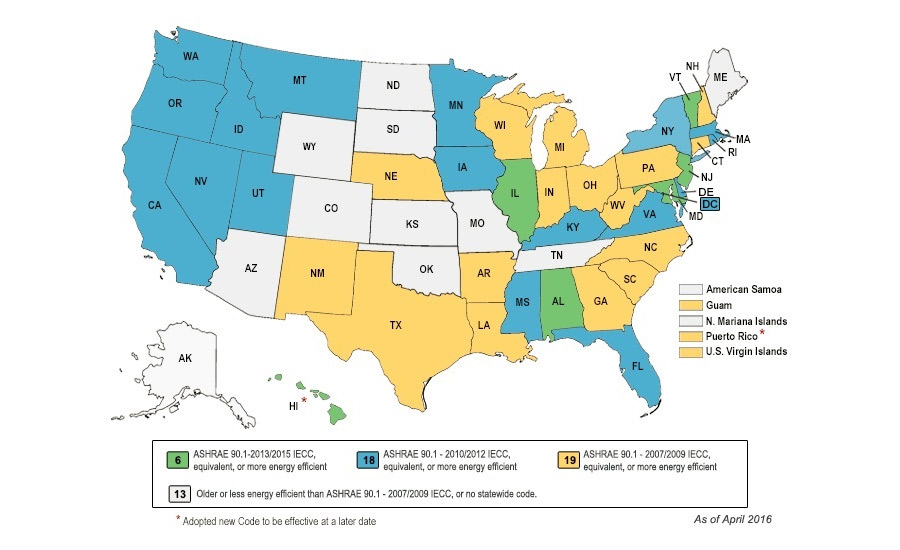For the last 40 years, engineers and designers have turned to the American Society of Heating, Refrigeration and Air-Conditioning Engineers’ (ASHRAE) Standard 90.1 for guidance in designing energy-efficient building systems. When the Energy Policy Act (EPAct) was passed in 1992, states were required to adopt commercial building energy codes — with ASHRAE 90.1 used as the benchmark, and in most instances, the default state energy code. This practice has continued, resulting in the ASHRAE energy standard being placed on continuous maintenance and updated every three years. States have also adopted the International Energy Conservation Code (IECC), which allows for the provisions of ASHRAE Standard 90.1 to be used as a compliance path. While the Department of Energy makes a ruling on the most current version of the energy standards, states are varied in their adoption of state energy codes. As of this writing, only six states follow IECC 2015/ASHRAE 90.1-2013 as their energy code; 18, including New York, follow IECC 2012/ASHRAE 90.1-2010, and the remaining states follow an older version or have no state energy code at all.
Previous to the 2010 version of ASHRAE 90.1, data centers largely were exempt from the code, as the standard made an explicit exemption for “equipment and portions of building systems that use energy primarily for industrial, manufacturing, or commercial processes.”
However, with the 2010 version of the standard, this exemption was closed and data centers were included in the standard and ultimately adopted as code for states following ASHRAE 90.1-2010 or later. The impact of this inclusion was far reaching. Many data centers would be subject to requirements, such as air-side economization, that were not feasible. Imagine adding economization to an existing data center in the middle, or basement, of any number of skyscrapers in Manhattan. A number of companies signed a letter addressed to ASHRAE voicing their concerns, and a new standard was put into development specifically for data centers. Thus, the work on ASHRAE Standard 90.4, Energy Standard for Data Centers began. At the time of this writing, the standard has entered its fourth public draft review, likely the last, with a published standard expected toward the end of 2016.
While the standard may still be a long way from adoption into state energy codes, the development of a data center-specific energy standard is a welcome recognition of the nuances of data center design. As a document that was been developed with heavy input from a wide range of industry experts, the standard keeps the intention of an energy code in mind while allowing for considerable innovation in data center design. Rather than prescribing specific technologies and controls, the standard is more open ended by establishing performance requirements. This will help move data centers towards more efficient designs without constricting designers and owners, who may be working around strict operational requirements.
While the new standard has not been published, New York currently follows the requirements of ASHRAE 90.1-2010, making it important to understand the changing landscape of codes and standards as they relate to data centers.


Recent Comments
Risk Assessment for Data Centres
All wrapped up perfectly.